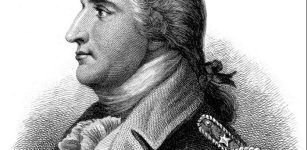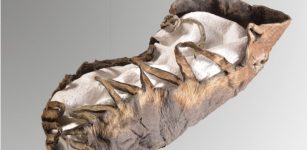Nebuchadnezzar II – Greatest Ruler Of Ancient Babylonia And Conqueror Of Judah
David Tee - AncientPages.com - All great rulers had to have a beginning and Nebuchadnezzar II was no exception to this rule. He was born in 634 BC to Nabopolassar, a general in the Assyrian army.
Two factors played a large role in Nebuchadnezzar’s early life. First, the Assyrians were weak after expanding too far. Second, his father wanted to restore the Babylon nation and make it into an empire.
King Nebuchadnezzar dreams of a great statue. Daniel before King Nebuchadnezzar, interpreting his dream. Image credit: Rijksmuseum - CC0 1.0
These factors gave Nebuchadnezzar the education that would turn him into a strong ruler. His father battled the Assyrians for approx. 10 years whittling away their territory as he waited for his son to become an adult and a capable general.
Even the Babylonian Chronicles (known as the series of tablets recording major events in Babylonian history) do not provide much detail concerning his early years. What is known is that Nebuchadnezzar II’s father strengthened his ties with the Medes, one of many Assyrian enemies by marrying his son to the daughter of Cyaxares the Mede ruler.
Nebuchadnezzar II After His Father’s Death
It was when his father was putting the finishing touches on the defeat of that Nebuchadnezzar II finally came on his own. As the Egyptian army approached to protect their Assyrian ally, Nebuchadnezzar II met them at Carchemish and destroyed the Egyptian army.
Nabopolassar, king of Babylon ruled from 626-to 605. 626-605 BC. Image source
This was to be his father’s last campaign. As the Assyrians and their capital Nineveh lay in ruins, Nabopolassar died in Babylon. In the year 605 BC Nebuchadnezzar ascended the throne and continued his father’s dream of making Babylon great again.
King Nebuchadnezzar II’s Rule Was Not All About War
Nebuchadnezzar II is well known from the Bible as the Babylonian King who conquered Judah when its King, Jehoiakim, revolted in 597 BC. This conquest led to the removal of many the Jewish citizens who occupied Jerusalem and other Judean cities.
Also, Nebuchadnezzar II expanded the Babylonian territory and to have complete rule he needed to conquer and destroy Tyre. He accomplished this feat in 585 BC. Once this city fell Nebuchadnezzar II was able to consolidate his power and rule his territory without too many issues. Although Judah remained rebellious to about 582 BC.
Detail of a terracotta cylinder of Nebuchadnezzar II, recording the building and reconstruction works at Babylon. 604–562 BC. From Babylon, Iraq, housed in the British Museum. Credit: Public Domain
Yet, war and conquering foes is not all that Nebuchadnezzar was famous for. He was also a great builder. His construction projects were so famous and spectacular that they were the envy of the known world. Also, his own people came to believe that Babylon was the center of the earth.
Imago Mundi, an ancient Babylonian world map uncovered some time ago shows this attitude as the world is placed around the nation of Babylon. One of his more famous building projects was, of course, the infamous hanging gardens of Babylon. Another was his blue colored Ishtar Gate, which so impressed ancient writers that there were complaints when it was left off the 7 Wonders of the Ancient World list.
Did The Hanging Gardens Of Babylon Really Exist?
Even though this architectural achievement was recorded on the 7 Wonders of the Ancient World list, there are some scholars who contest its existence and wonder why it was included.
Their opposition to the inclusion comes from the fact that Nebuchadnezzar himself did not mention the gardens in his own writings. The inscription is called the East India House Inscription but the work of praise by Nebuchadnezzar does not include any referral to the great gardens.
There are reasons for this. It is possible that Nebuchadnezzar II had either not started the project, or it was just in the early stages of construction. It is hard to say why it was left out. But it was not left out of the Bibliotheca Historica, Book II.10 written by Diodorus Siculus who lived between 90 and 30 BC.
The problem with that mention is that Siculus may have been talking about Assyrian Kings and a garden in Nineveh not Babylon nor Nebuchadnezzar II. It could be that Siculus simply made a mistake when he wrote his location description.
Nebuchadnezzar II Died Peacefully
Nebuchadnezzar II may have been a bit ahead of his time. Women enjoyed certain equality with men. Babylon's education and other important institutes flourished as did his empire.
It is a good legacy for a King to leave behind. Nebuchadnezzar died peacefully in his capital city, one he tried to make the center of the world.
Written by – David Tee - AncientPages.com Staff Writer
Copyright © AncientPages.com All rights reserved. This material may not be published, broadcast, rewritten or redistributed in whole or part without the express written permission of AncientPages.com
Expand for referencesThomas Nelson Publishers. (1996). Nelson’s complete book of Bible maps & charts: Old and New Testaments (Rev. and updated ed.). Nashville, TN: Thomas Nelson.
Snearly, M. (2016). Euphrates River. In J. D. Barry, D. Bomar, D. R. Brown, R. Klippenstein, D. Mangum, C. Sinclair Wolcott, … W. Widder (Eds.), The Lexham Bible Dictionary. Bellingham, WA: Lexham Press.
Wilson, C.A., “Nebuchadnezzar The Great Builder” (1972). Bible and Spade, 1(1), 9.
More From Ancient Pages
-
 Michelangelo’s Hidden Secrets Under The Medici Chapel
Featured Stories | Jul 16, 2019
Michelangelo’s Hidden Secrets Under The Medici Chapel
Featured Stories | Jul 16, 2019 -
 On This Day In History: Edict Of Longjumeau Was Signed And Ended Second War of Religion – On Mar 23, 1568
News | Mar 23, 2017
On This Day In History: Edict Of Longjumeau Was Signed And Ended Second War of Religion – On Mar 23, 1568
News | Mar 23, 2017 -
 New Discovery: Unknown Use Of Yellow Colors In Ancient Egypt – Revealed
Archaeology | Oct 16, 2019
New Discovery: Unknown Use Of Yellow Colors In Ancient Egypt – Revealed
Archaeology | Oct 16, 2019 -
 Magical Dinas Emrys – Battle Of The Dragons And Merlin’s Hidden Treasure
Featured Stories | May 21, 2019
Magical Dinas Emrys – Battle Of The Dragons And Merlin’s Hidden Treasure
Featured Stories | May 21, 2019 -
 Oklahoma’s Mysterious Hollow Hill – The Unexpected – Part 2
Featured Stories | Jul 9, 2020
Oklahoma’s Mysterious Hollow Hill – The Unexpected – Part 2
Featured Stories | Jul 9, 2020 -
 Mysterious Mount Roraima Surrounded By Myths And Clouds Of Dense Fog
Featured Stories | Nov 13, 2018
Mysterious Mount Roraima Surrounded By Myths And Clouds Of Dense Fog
Featured Stories | Nov 13, 2018 -
 Riddle Of The Hanging Gardens Of Babylon – Highly Advanced Technologies – Part 2
Featured Stories | Jun 11, 2019
Riddle Of The Hanging Gardens Of Babylon – Highly Advanced Technologies – Part 2
Featured Stories | Jun 11, 2019 -
 Scientists confirm the world’s only twin asteroid strike in Sweden
Human Beginnings | Oct 1, 2015
Scientists confirm the world’s only twin asteroid strike in Sweden
Human Beginnings | Oct 1, 2015 -
 On This Day In History: 3,106-Carat Diamond Found – On Jan 25, 1905
News | Jan 25, 2017
On This Day In History: 3,106-Carat Diamond Found – On Jan 25, 1905
News | Jan 25, 2017 -
 On This Day In History: American General Benedict Arnold Commits Treason – On Sep 21, 1780
News | Sep 21, 2016
On This Day In History: American General Benedict Arnold Commits Treason – On Sep 21, 1780
News | Sep 21, 2016 -
 Keezhadi Excavations Reveal: Tamil-Brahmi Script Older Than Previously Thought
Archaeology | Sep 25, 2019
Keezhadi Excavations Reveal: Tamil-Brahmi Script Older Than Previously Thought
Archaeology | Sep 25, 2019 -
 Rare Gold Foils Found In Ancient Egyptian Tombs At Tel El-Deir In New Damietta
Archaeology | Jul 24, 2024
Rare Gold Foils Found In Ancient Egyptian Tombs At Tel El-Deir In New Damietta
Archaeology | Jul 24, 2024 -
 Kiln Was Invented In Mesopotamia Around 6,000 B.C.
Ancient History Facts | Mar 7, 2018
Kiln Was Invented In Mesopotamia Around 6,000 B.C.
Ancient History Facts | Mar 7, 2018 -
 Extremely Well Preserved 2,000-Year-Old Child Shoe Discovered In Salt Mine
Archaeology | Sep 5, 2023
Extremely Well Preserved 2,000-Year-Old Child Shoe Discovered In Salt Mine
Archaeology | Sep 5, 2023 -
 900-Year-Old Coins And Jewelry Unearthed In Polish Village – Could They Belong To A Ruthenian Princess?
Artifacts | Jan 12, 2021
900-Year-Old Coins And Jewelry Unearthed In Polish Village – Could They Belong To A Ruthenian Princess?
Artifacts | Jan 12, 2021 -
 1,200-Year-Old Wari Temple Discovered In Peru
Archaeology | Feb 24, 2023
1,200-Year-Old Wari Temple Discovered In Peru
Archaeology | Feb 24, 2023 -
 Lost Maya City Hidden In The Volcanic Lake Atitlán Explored By Underwater Archaeologists
Archaeology | May 4, 2022
Lost Maya City Hidden In The Volcanic Lake Atitlán Explored By Underwater Archaeologists
Archaeology | May 4, 2022 -
 Resourceful Pre-Hispanic Society In Bolivia Had Flourishing Agriculture Despite Harsh Environment Of The Andes
Archaeology | Dec 24, 2017
Resourceful Pre-Hispanic Society In Bolivia Had Flourishing Agriculture Despite Harsh Environment Of The Andes
Archaeology | Dec 24, 2017 -
 DNA Evidence For Early Contact Between Farmers And Pastoralists In Black Sea Region
Archaeology | Jul 20, 2023
DNA Evidence For Early Contact Between Farmers And Pastoralists In Black Sea Region
Archaeology | Jul 20, 2023 -
 Unexplained Lights Over English City Reported By Police May Have A Deeper Meaning
Featured Stories | Dec 11, 2019
Unexplained Lights Over English City Reported By Police May Have A Deeper Meaning
Featured Stories | Dec 11, 2019



